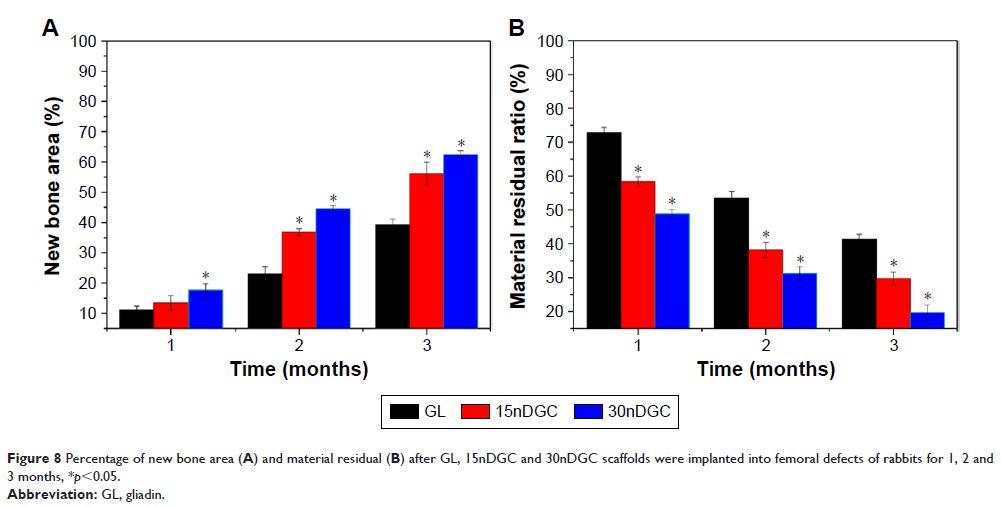9 0 5 7 8
论文已发表
注册即可获取德孚的最新动态
IF 收录期刊
- 2.6 Breast Cancer (Dove Med Press)
- 3.9 Clin Epidemiol
- 3.3 Cancer Manag Res
- 3.9 Infect Drug Resist
- 3.6 Clin Interv Aging
- 4.8 Drug Des Dev Ther
- 2.8 Int J Chronic Obstr
- 8.0 Int J Nanomed
- 2.3 Int J Women's Health
- 3.2 Neuropsych Dis Treat
- 4.0 OncoTargets Ther
- 2.2 Patient Prefer Adher
- 2.8 Ther Clin Risk Manag
- 2.7 J Pain Res
- 3.3 Diabet Metab Synd Ob
- 4.3 Psychol Res Behav Ma
- 3.4 Nat Sci Sleep
- 1.9 Pharmgenomics Pers Med
- 3.5 Risk Manag Healthc Policy
- 4.5 J Inflamm Res
- 2.3 Int J Gen Med
- 4.1 J Hepatocell Carcinoma
- 3.2 J Asthma Allergy
- 2.3 Clin Cosmet Investig Dermatol
- 3.3 J Multidiscip Healthc

纳米多孔透辉石调节生物相容性、可降解性和基于麦醇溶蛋白的复合材料、用于新骨形成的生物活性支架的骨生成
Authors Ba Z, Chen Z, Huang Y, Feng D, Zhao Q, Zhu J, Wu D
Received 11 January 2018
Accepted for publication 26 April 2018
Published 4 July 2018 Volume 2018:13 Pages 3883—3896
DOI https://doi.org/10.2147/IJN.S162262
Checked for plagiarism Yes
Review by Single-blind
Peer reviewers approved by Dr Farooq Shiekh
Peer reviewer comments 7
Editor who approved publication: Dr Lei Yang
Introduction: It is predicted that with increased life expectancy in the whole
world, there will be a greater demand for synthetic biomedical materials to
repair or regenerate lost, injured or diseased tissues. Natural polymers, as
biomedical materials, have been widely applied in the field of regenerative
medicine.
Materials and
methods: By incorporation of nanoporous
diopside bioglass (nDPB) into gliadin (GL) matrix, macro–nanoporous scaffolds
of nDPB/GL composites (DGC) were fabricated by method of solution compressing
and particles leaching.
Results: The results revealed that the DGC scaffolds possessed
well-interconnected macropores of 200–500 µm and nanopores of 4 nm, and
the porosity and degradability of DGC scaffolds remarkably increased with the
increase in nDPB content. In addition, in vitro cell experiments revealed that
the adhesion and growth of MC3T3-E1 cells on DGC scaffolds were significantly
promoted, which depended on nDPB content. Moreover, the results of histological
evaluations confirmed that the osteogenic properties and degradability of DGC
scaffolds in vivo significantly improved, which were nDPB content dependent.
Furthermore, the results of immunohistochemical analysis demonstrated that,
with the increase in nDPB content, the type I collagen expression in DGC
scaffolds in vivo obviously enhanced, indicating excellent osteogenesis.
Discussion and
conclusion: The results demonstrated that the
DGC scaffolds containing 30 wt% nDPB (30nDGC) exhibited good biocompatibility
and new bone formation ability, which might have a great potential for
applications in bone regeneration.
Keywords: nanoporous diopside bioglass, gliadin, macro-nanoporous, MC3T3-E1,
osteogenesis
